An HSJ roundtable analysed the importance of creating an NHS in which staff move seamlessly between organisations – and the role that STPs will play in this. Report by Alison Moore
Many of the challenges the NHS will face over the next decade are workforce related: having the right number of staff with the right skills in the right place, and getting the most out of them.
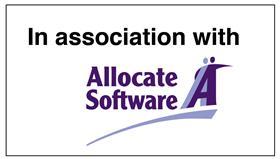
These issues often go beyond organisational boundaries so sustainability and transformation plans may offer opportunities to address these issues and look for answers across local health economies.
An HSJ roundtable brought together those involved in workforce at both national and local levels to outline how they saw the position so far and what needs to be done to create what one panellist described as a “workforce without walls” where staff could move seamlessly between different organisations, using their skills to the maximum to help patients. This could also benefit NHS organisations who may be able to reduce agency costs through shared banks.
While participants could see many challenges ahead there were some very positive messages about the changes STPs were already driving.
A key message was that STPs have led to conversations between NHS organisations and between the NHS and social care, which had not always been the case.

Julie Screaton, regional director of Health Education England for London and the South East, said: “What we are seeing is people are really thinking beyond the boundaries about workforce. They are thinking about the health and social care interface, they are thinking about people working at the top of their licence, and they are thinking about the informal workforce such as carers and the population.”
Incredibly positive
People were also thinking more creatively about how different models of employment could be developed to drive efficiencies, she added.
From the perspective of someone who both runs a social enterprise delivering NHS care and leads on workforce within an STP, chief executive of Nottingham CityCare Lyn Bacon said the atmosphere was “incredibly positive”.
“It is an opportunity to build on the work we have been doing for some time to bring the system together,” she said. In her area this had included heads of workforce and organisational development getting together, and this collaborative approach was now extending to engaging with trade unions. Underlying this was a need to understand the workforce and what was needed for the future.
Part of STPs’ purpose is around rebalancing the system to help people living with poor health have a better quality of life, suggested Karen Middleton, chief executive of the Chartered Society of Physiotherapy. This leads to a greater focus on rehabilitation and prevention.
Risk to safety
“We have to address that or we will have more of the same and the problem will get worse and worse,” she said. “At some point we have to make a step in that direction or nothing will change.”
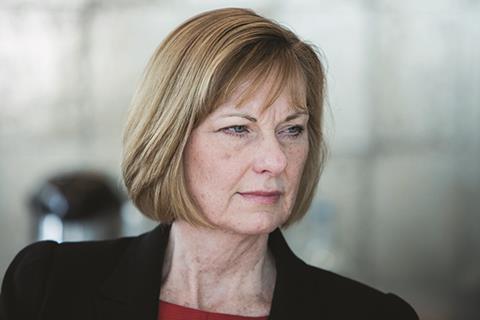
She added that there were examples of STPs wanting to make these shifts through improving community rehabilitation and access to physiotherapy. In the future, this could mean the workforce might look different and would need different skills. There was also a question of how many staff would be needed.
“Without getting the numbers of staff right there is a real risk to safety and quality. But only to look at numbers is very short sighted. We don’t need more of the same,” she added.
One example of the change needed might be the development of physiotherapy support staff. However, more use could also be made of advanced practitioners in physiotherapy in areas such as primary care, and physiotherapists would need to develop coaching skills to help people live independently.
A potential change which has been much talked about is moving staff away from working for one institution to working within flexible teams covering a wider area.
Kevin Croft, director of people and transformation at Epsom and St Helier University Hospitals Trust, described the future as being about a “workforce without walls”, with teams incorporating people from different organisations working together.
In some areas, conversations were already happening on how to make this work, he said, but it would be important to develop mechanisms to stop practicalities getting in the way of change. However, supply shortages – such as around doctors – were already beginning to drive some changes.
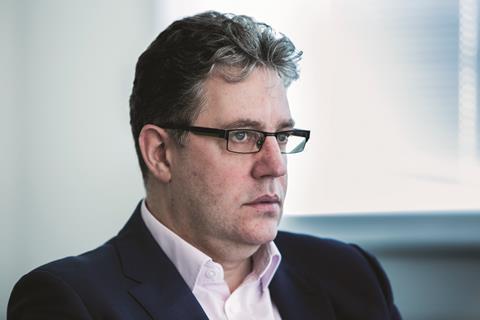
“We can’t ignore the financial challenges either.” he said. “That is a bit about getting more efficient but also more collaborative about how we use the workforce – across different providers, especially where we have shortages of people,” he said.
Working across borders
Changes in the workforce of the future might also need changes in the way education was commissioned, he suggested. “It’s quite challenging working across borders and the behaviours that develop when the system is stuck in an institutional mode,” he added, saying there was a need for change in the way careers were managed to support collaborative working rather than just institutional success.
But there was one issue around STPs which concerned many panellists: the lack of engagement of staff in developing the plans and the need for them to be involved as plans went forward. Clinicians often had not been involved with the process and, Ms Preston pointed out, many nurses still had little knowledge about STPs. Even doctors were often not engaged. Dr Liam Brennan, vice chair of the Academy of Medical Royal Colleges, said: “I’m very concerned at the lack of knowledge among the profession and lack of involvement.”
There was a need for engagement to ensure it did not feel like things were being “done to” the staff rather than done with them.
So what needs to be done to engage staff and get them enthused? Mil Milojevic, director product management, Allocate Software, said: “For the sustainability bit of STPs to be effective it is going to be important to get the buy in of your staff,” he said. “Without improving quality and safety as part of the package I don’t think the workforce will be fully behind it. And without that I don’t think it will be sustainable.
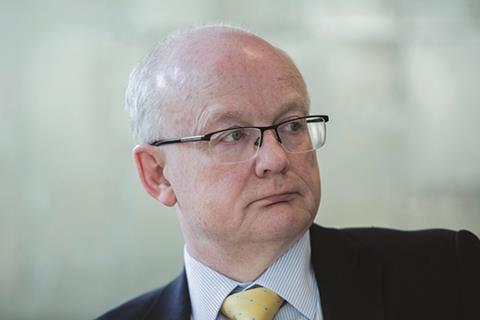
“The whole process seems to have unleashed some transformation in thinking of a lot of people. The workforce of the future is going to require much more flexibility. It will be more integrated, less fragmented and more mobile.”
That would lead to significant challenges around technology but also around behaviours and culture if system-wide working was to become a reality, he added.
Radical change
Some of the challenges in the next year or so will be around getting new models of providing care and new roles in place, while also continuing to deliver services within budget.
Shaun Lintern, HSJ workforce correspondent and roundtable chair, questioned whether some STPs were looking for “cheap alternatives” without these being underpinned by quality. He doubted whether some of the proposed reductions in secondary care staffing numbers were feasible, as increasing capacity in other parts of the system would not lead to overnight reductions in demand in secondary care. There was a need for investment in primary care before reductions could be made in secondary care, he suggested.
For many on the panel, one of the challenges around change was a need to balance creating new roles with the skill sets needed for the future, and developing the staff who are already employed to make the best use of their skills.

Ms Bacon said: “I do think that in order to not only transform but make efficiencies we have to start thinking differently. It won’t work with the same roles in the same way. We have to radically change.”
Many patients with complex needs needed someone who was highly competent but also knew when to refer onwards, she said. And there was a need for “independence” workers who focused on people coming out of hospital and were embedded in wider teams.
‘We don’t want to have change for change’s sake. It needs to be part of the picture of how we make improvements’
There are already new roles proposed which are likely to have an impact over the next few years – but there was concern that the landscape of how these would work and be regulated was not always clear. Both Dr Brennan and Ms Preston stressed the new for appropriate regulation of some of these roles. Ms Preston questioned how the nurse associate role was going to fit in and added that patients being cared for at home often only wanted one or two people coming in, not four or five.
She reminded the roundtable that band 5 and 6 nurses were “the backbone of the service”.
“We don’t want to have change for change’s sake. It needs to be part of the picture of how we make improvements,” she said.

Ms Screaton welcomed the examples of professions embracing different ways of working but added there was a need to give them the right support. Nurse associates were being tested but she added that there had been demands from within the NHS – from nursing directors, for example – for this new role. However, the focus was as much on supporting and developing existing staff groups in work in different ways.
Transforming the workforce is likely to need extra funding in the short to medium term and there was some scepticism that this transformation would necessarily deliver significant savings immediately.
Ms Preston questioned whether change could be delivered quickly and whether it would necessarily reduce costs, while Mr Croft added: “We have had some very challenging conversations about things being transformational but when is the money going to come?
“I have not seen the evidence around a redesign of roles that will bring in major financial savings in a short period of time.”
Financial challenge
Decisions would have to be made about which services could be delivered where, he said. Workforce shortages, especially of key groups such as doctors, would be part of this along with efficiency requirements.

“There is a financial challenge that we have to be honest about,” he said, adding that there was a need, in the next year, to do some things which would help “the here and now” financially.
‘People are just surviving from day to day. There is not the opportunity for people to think’
There are often pockets or pilots of redesign in the NHS which are then not scaled up even when they had the potential to be transformative: Ms Middleton said one of the frustrations of her members was that there was often short term funding available for schemes which then stopped, even when the schemes were well received with positive feedback from patients.
However, the panel did know of examples of transformations which were being more widely adopted. Dr Brennan mentioned the “getting it right first time” initiative and Professor Tim Briggs’ work around orthopaedics – now being extended to other specialties – as examples of this.
They were often cases where healthcare professionals could see the benefits to patients, there was national leadership and charismatic leaders who wanted to see change. But Ms Bacon stressed the need for “time and capacity” to drive change and the possibility that things could be blocked due to limited local capacity to effect radical change.
Several panellists highlighted the strains of trying to be transformative when there was also a “day job” to be done. “People are just surviving from day to day. There is not the opportunity for people to think and reflect,” said Dr Brennan. “If we don’t give people the opportunity to engage in conversations and have the time to do it, how can we expect them to be part of the solution?”
‘Who the employer is does not have to be a block to our teams working together’
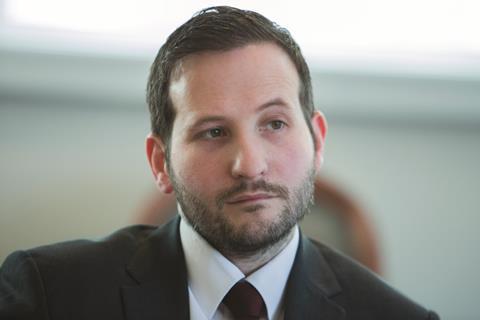
Ms Preston echoed these concerns, saying it was hard for people to have resilience in their day jobs, let alone think about redesign even though they often knew what needed to be done.
Many STPs have suggested there is greater scope for staff to work across different organisations, and work from different locations. There are some practical challenges to overcome, but this process has started in some areas – such as southwest London.
Mr Croft said he had staff from hospital, community services, GPs and local authorities working together. “One of the organisations is the host and takes on certain responsibilities but people are able to work in the team even though they are employed by different organisations.
“Who the employer is does not have to be a block to our teams working together,” he said. Another example of collaborative working was the elective orthopaedic centre in southwest London, which drew staff from several organisations.
However, there were also opportunities to look at how temporary staff are used to improve availability and reduce costs.
“In southwest London we have worked on a single bank across five employers, starting in nursing,” he said. The organisations were now at the point of agreeing uniform pay rates across them. Ultimately this would reduce the use of agencies, which would have financial benefits for the organisations involved.
“But it requires a lot of time,” he said. “To get to what we need is quite an effort. Different trusts are in different positions with regard to their agency situation.”
Mr Milojevic pointed out that banks had traditionally struggled to compete with agencies on pay rates but the agency cap, introduced by NHS Improvement, had significantly changed that position. “If the NHS operates as a whole system we can give people opportunities to experience new places of work and gain new skills which retain them as part of the NHS,” he said.
The progress made in south west London, where Allocate had worked with the trusts, was now being replicated in other STP areas, he said.
“Where we started is with the temporary workforce. Although the issues around pre-employment checks, terms and conditions, and culture are all there they are at least easier to overcome.
“Get that right and it will help to solve some of the broader issues around sharing staff.”
In the past, practical difficulties such as around “passporting”, accepting competencies across organisations, mandatory training and DBS checks have all been raised as potential hurdles to sharing staff – but these obstacles are being overcome.
Ms Middleton said there was an example of what was happening in Greater Manchester, with collaborative approaches involving local authorities, health, and trade unions overcoming sticky issues.
Key message
Staff may also be at different points in their career and looking for different things, which may make alternative models of working attractive to them, suggested Ms Preston. “Having systems that allow people to work in different areas could be a good way forward,” she said. “But we need staffside there to get all of the employment issues right.”
Dr Brennan – who also pointed out the need for cross border working where STP areas meet – questioned whether there could be patient safety issues with staff working in multiple locations.
Stable teams drove better care, he pointed out, and there were also issues around time spent travelling between locations and whether this was a good use of staff time.
However, Mr Lintern said many of the issues which could impact on patient safety already occur with agency staff.
Summing up, he said new models of workforce offered both opportunities and challenges but there was a key message around the need to engage with staff around any changes.
Roundtable participants
Wendy Preston, RCN head of nursing practice
Dr Liam Brennan, vice chair of the Academy of Medical Royal Colleges and president of the Royal College of Anaesthetists
Karen Middleton, chief executive of the Chartered Society of Physiotherapy
Kevin Croft, director of people and transformation at Epsom and St Helier University Hospitals Trust
Lyn Bacon, chief executive of Nottingham CityCare and lead for workforce on Nottinghamshire STP
Julie Screaton, regional director for London and the South East, Health Education England
Mil Milojevic, director product management, Allocate Software
Chair – Shaun Lintern, senior correspondent specialising in workforce, HSJ.



























No comments yet